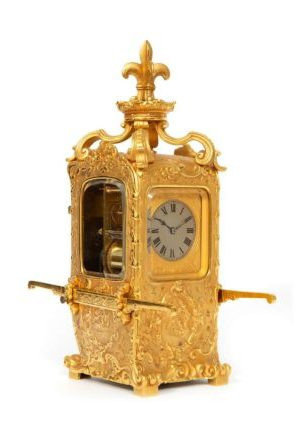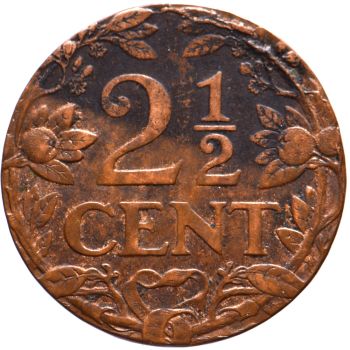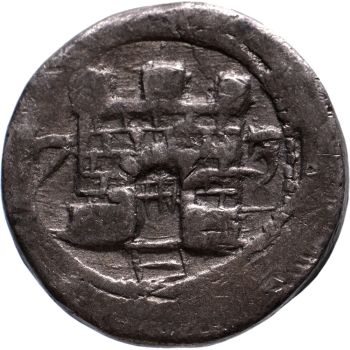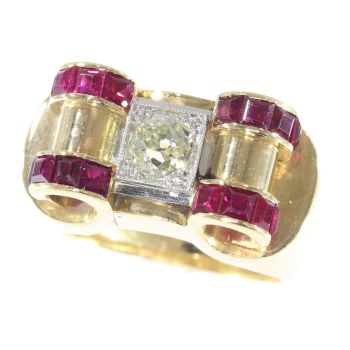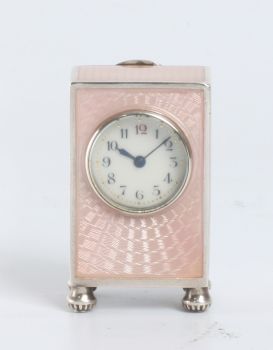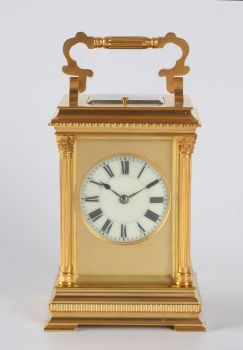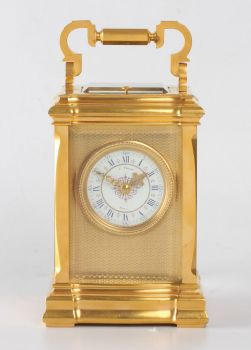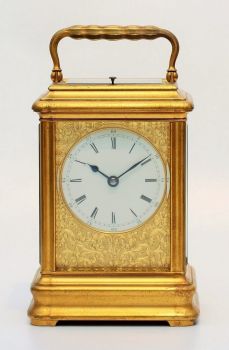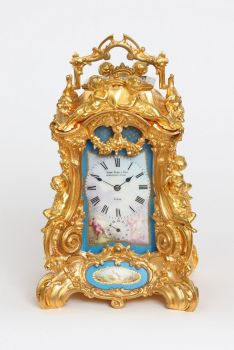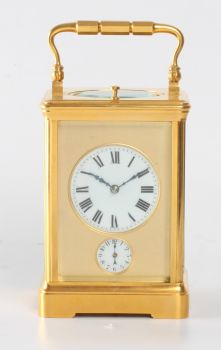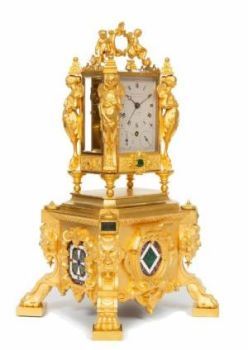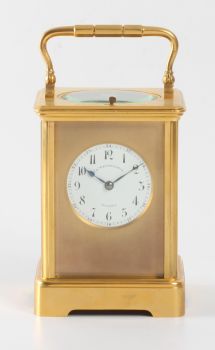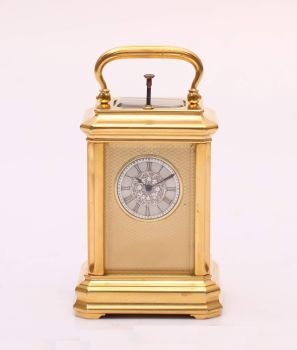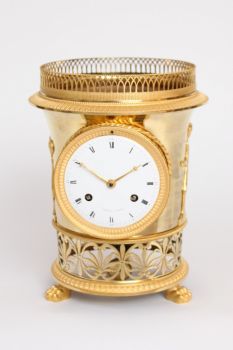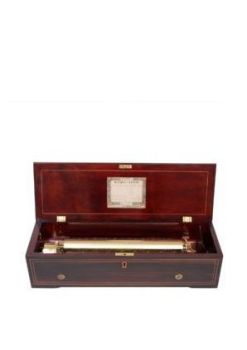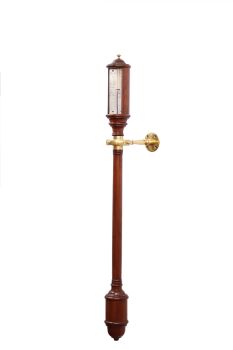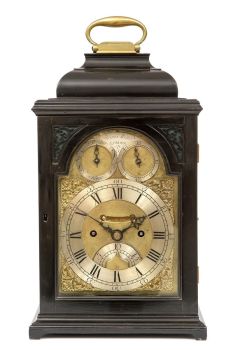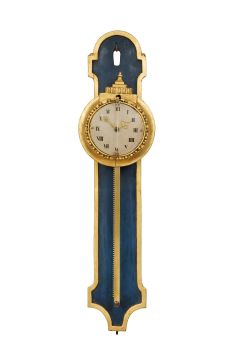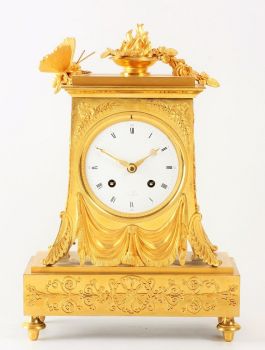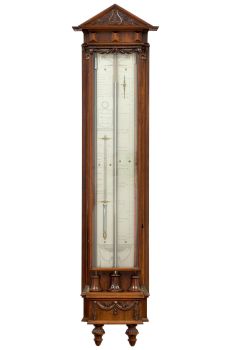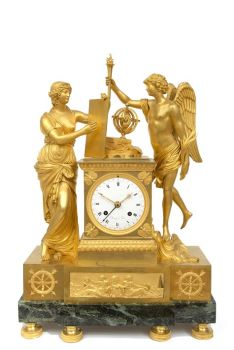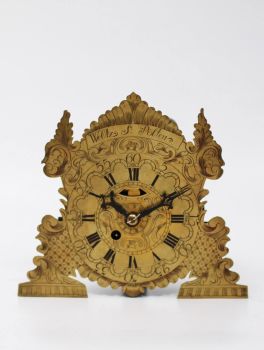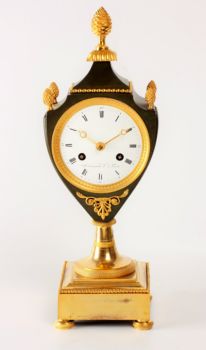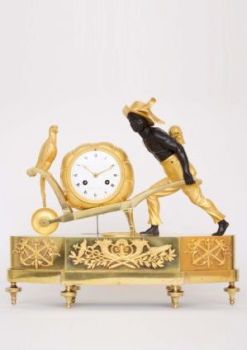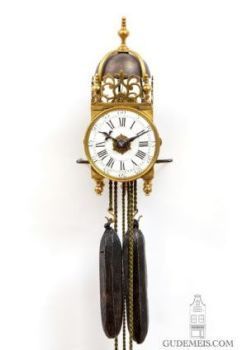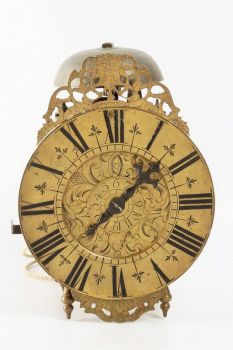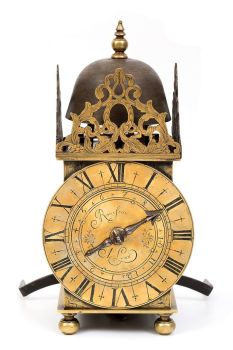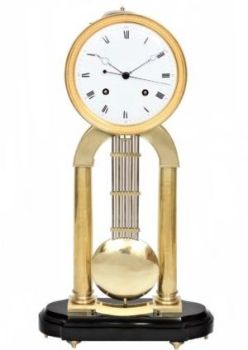Un orologio da carrozza francese in ottone dorato 'portantina', circa 1870 1870
Artista Sconosciuto
28 ⨯ 11 ⨯ 21 cm
€ 12.500
Gude & Meis Antique clocks and Music Boxes
- A proposito di opere d'arteThe case
The cast and chiseled gilt bronze case is shaped as a 'sedan chair' from the 18th Century. It is surmounted by a fleur-des-lys ornament and adourned by foliate scrolls and flowers around cartouches with putti all over. It has carrying bars on the sides and is raised on scroll feet.
The dial
The 4.6-cm silvered dial has Roman numerals and has blued steel fleur-des-lys hands. It is set in a finely foliate engraved gilt mask.
The movement
The spring driven movement has a duration of eight days. It strikes the hours and half hours on a coiled steel gong. It is regulated by a platform anchor escapement.
a display of fantasy
French carriage clockmakers sought to improve their sales by producing different cases. First, there were different styles of cases such as the ‘gorge case’ or ‘case Anglaise’. Later cases were embellished with porcelain panels or colourful enamel. But certainly one of the most imaginative carriage clocks is this one shaped as a sedan chair. Of course, it is very unlikely that this clock was used during travel, but that could also be said of other so-called carriage clocks having vulnerable porcelain panels. It does show the ingenuity of the makers, though, and the lengths they went to find new buyers. This beautifully made object is a curiosity that will amaze and bring delight to many that see it.
Lit. Derek Roberts, Carriage and other travelling clocks, pp. 115. - A proposito di opere artista
Può succedere che un artista o un creatore sia sconosciuto.
Alcune opere non sono determinate da chi sono state realizzate o sono state realizzate da (un gruppo di) artigiani. Esempi sono statue dell'antichità, mobili, specchi o firme non chiare o leggibili ma anche alcune opere non sono affatto firmate.
Inoltre puoi trovare la seguente descrizione:
•"Attribuito a …." A loro avviso probabilmente opera dell'artista, almeno in parte
•“Studio di ….” o “Officina di” A loro avviso un'opera eseguita nello studio o nella bottega dell'artista, eventualmente sotto la sua supervisione
•“Cerchio di…” A loro avviso un'opera del periodo dell'artista che mostra la sua influenza, strettamente legata all'artista ma non necessariamente al suo allievo
•"Stile di..." o "Seguace di..." A loro avviso un'opera eseguita nello stile dell'artista ma non necessariamente da un allievo; può essere contemporaneo o quasi contemporaneo
•“Modalità di…” A loro avviso un'opera nello stile dell'artista ma di epoca successiva
•"Dopo …." A loro avviso una copia (di qualsiasi data) di un'opera dell'artista
•“Firmato…”, “Datato…” o “Iscritto” A loro avviso l'opera è stata firmata/datata/inscritta dall'artista. L'aggiunta di un punto interrogativo indica un elemento di dubbio
•"Con firma....", "Con data...", "Con iscrizione..." o “Riporta firma/data/iscrizione” a loro avviso la firma/data/iscrizione è stata aggiunta da qualcuno diverso dall'artista
Sei interessato ad acquistare questa opera d'arte?
Artwork details
Related artworks
Artista Sconosciuto
An Indian part-gilt silver-clad ceremonial sceptre or mace with a tiger’s head1850 - 1900
Prezzo su richiestaZebregs & Röell - Fine Art - Antiques
 A cura di
A cura diDanny Bree
Artista Sconosciuto
Verre à boire Cristallo façon de Venise1600 - 1650
Prezzo su richiestaPeter Korf de Gidts - Antiquairs
1 - 4 / 12Firm Erhard & Sohne, Schwäbisch Gmünd
Erhard und Söhne – Jugendstil intarsia klok – 1908 / 19091900 - 1909
Prezzo su richiestaAntiques Emporium
1 - 4 / 24- 1 - 4 / 12

